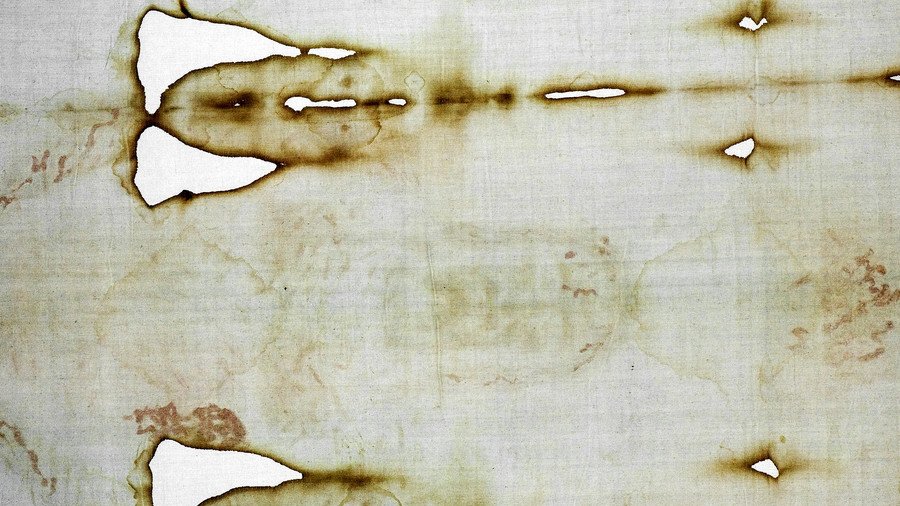Shroud of Turin mystery deepens after dramatic ‘bleeding simulation’ experiment (VIDEO)

A blood pattern analysis of the Shroud of Turin suggests that bloodstains on the revered cloth are “totally unrealistic,” raising fresh questions over the theory that the fabric was used to bury Jesus Christ.
The three-meter long linen cloth, which bears an image of a bearded man some believe to be Jesus Christ, has long been steeped in mystery. The cloth is thought to have been used to wrap Christ’s body after his crucifixion, and has been the subject of various studies attempting to determine its origins.
However, new research claims that it’s not possible for the stains to have formed while a body was lying flat on the fabric.
READ MORE: ‘Discovery of the century’: Search for secret King Tut chamber to take place this month
Forensic anthropologist Matteo Borrini of Liverpool John Moores University in the UK and organic chemist Luigi Garlaschelli of the Italian Committee for the Investigation of Claims of the Pseudoscience used bloodstain pattern analysis to determine how the stains on the shroud were created.
According to their research, published in the Journal of Forensic Sciences, the Shroud of Turin’s blood stains indicate several different poses were used to imprint the patterns for the hands, chest and back. They used two types of blood for their analysis – human blood donated for the research, and synthetic blood with the same fluid properties.
Video footage shows the researchers carry out the dramatic experiment with Borrini using Garlaschelli as a live subject. The pair also used a mannequin to analyse the blood flow on wounds.
The paper indicates the methods used were unable to fully explain all of the markings, with the research suggesting the patterns were made with a body in different positions. Some of the stains on the shroud could only have occurred by a person standing upright, researchers concluded after conducting blood flow tests, while the stains at the back are “totally unrealistic” for a body lying flat on its back.
Furthermore, “simulation of bleeding from the nail wounds contacting wood surfaces yielded unclear results.”
In 1988, after years of discussion and anticipation, scientists finally radiocarbon dated the shroud, determining that it originated from somewhere between 1260 and 1390.
Research since then has often presented inconsistent results, further deepening the mystery.
Several studies established the presence of blood on the cloth, however others still argue that the red specks are paint pigment. A DNA analysis in 2015 said both leading explanations for the shroud were plausible – that either it originated in medieval Europe and came into contact with people from different ethnic backgrounds, or that it originated in the Middle East and was transported across several countries through the centuries.
READ MORE: Turin Shroud is stained with the blood of a torture victim, new research reveals
Last year another team of researchers published a study that claimed the shroud contained biological nanoparticles consistent with severe trauma, suggesting that the cloth was really used to bury Jesus.













